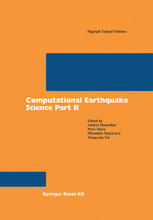

Most ebook files are in PDF format, so you can easily read them using various software such as Foxit Reader or directly on the Google Chrome browser.
Some ebook files are released by publishers in other formats such as .awz, .mobi, .epub, .fb2, etc. You may need to install specific software to read these formats on mobile/PC, such as Calibre.
Please read the tutorial at this link: https://ebookbell.com/faq
We offer FREE conversion to the popular formats you request; however, this may take some time. Therefore, right after payment, please email us, and we will try to provide the service as quickly as possible.
For some exceptional file formats or broken links (if any), please refrain from opening any disputes. Instead, email us first, and we will try to assist within a maximum of 6 hours.
EbookBell Team

0.0
0 reviewsExciting developments in earthquake science have benefited from new observations, improved computational technologies, and improved modeling capabilities. Designing models of the earthquake generation process is a grand scientific challenge due to the complexity of phenomena and range of scales involved from microscopic to global. Such models provide powerful new tools for the study of earthquake precursory phenomena and the earthquake cycle.
Through workshops, collaborations and publications, the APEC Cooperation for Earthquake Simulations (ACES) aims to develop realistic supercomputer simulation models for the complete earthquake generation process, thus providing a "virtual laboratory" to probe earthquake behavior.
Part II of the book embraces dynamic rupture and wave propagation, computational environment and algorithms, data assimilation and understanding, and applications of models to earthquakes. This part also contains articles on the computational approaches and challenges of constructing earthquake models.